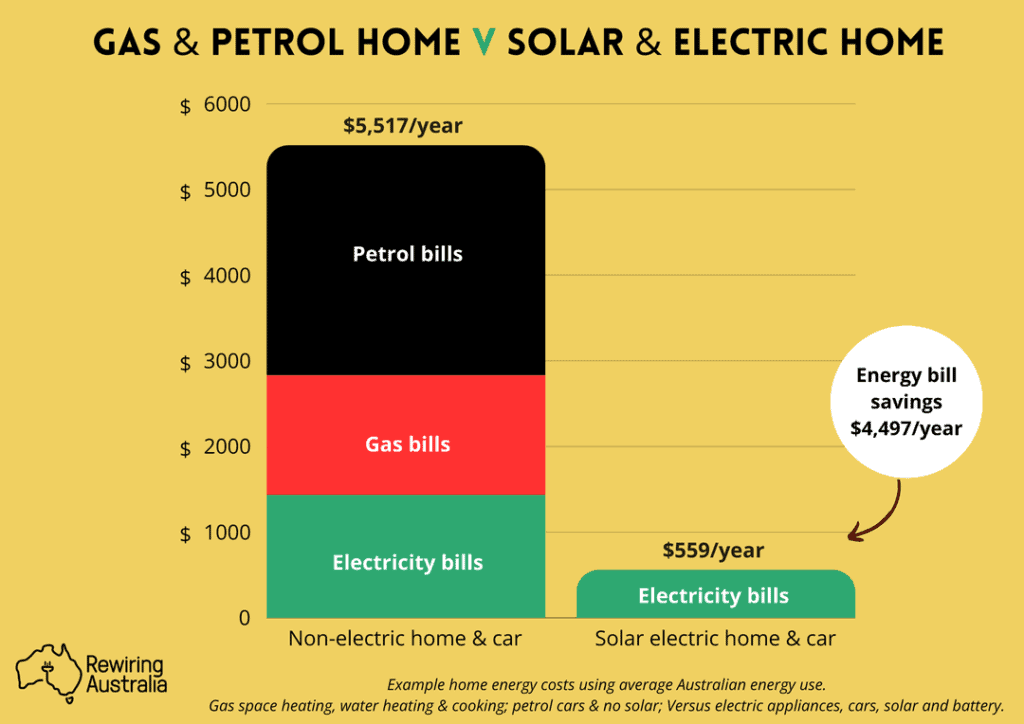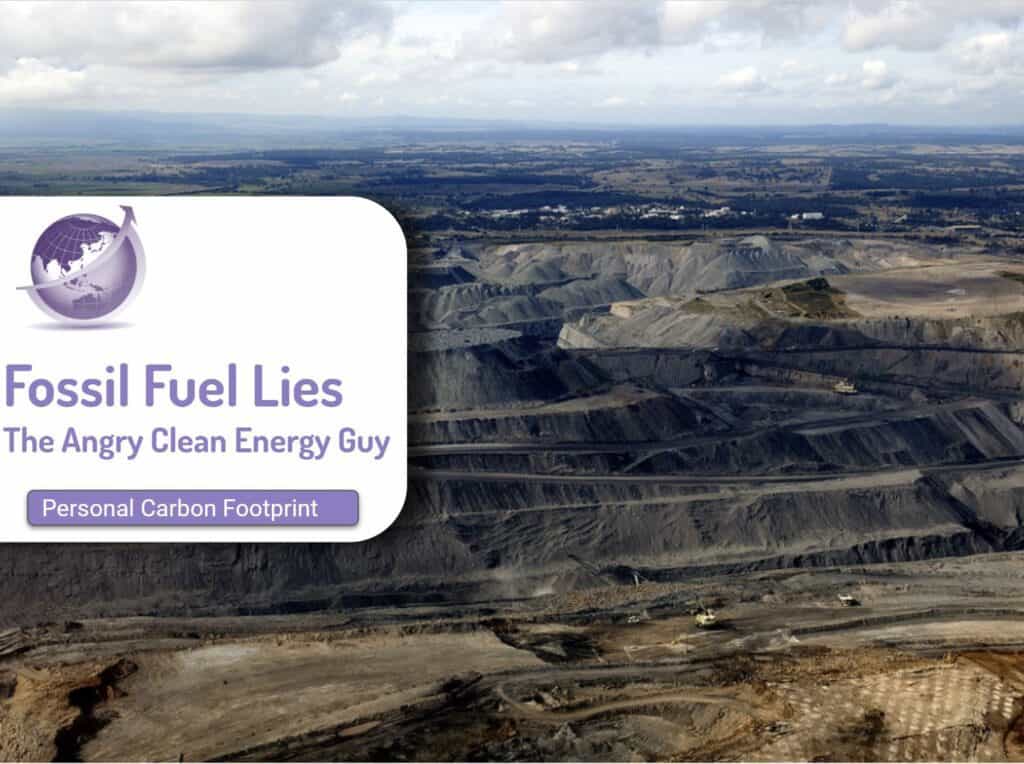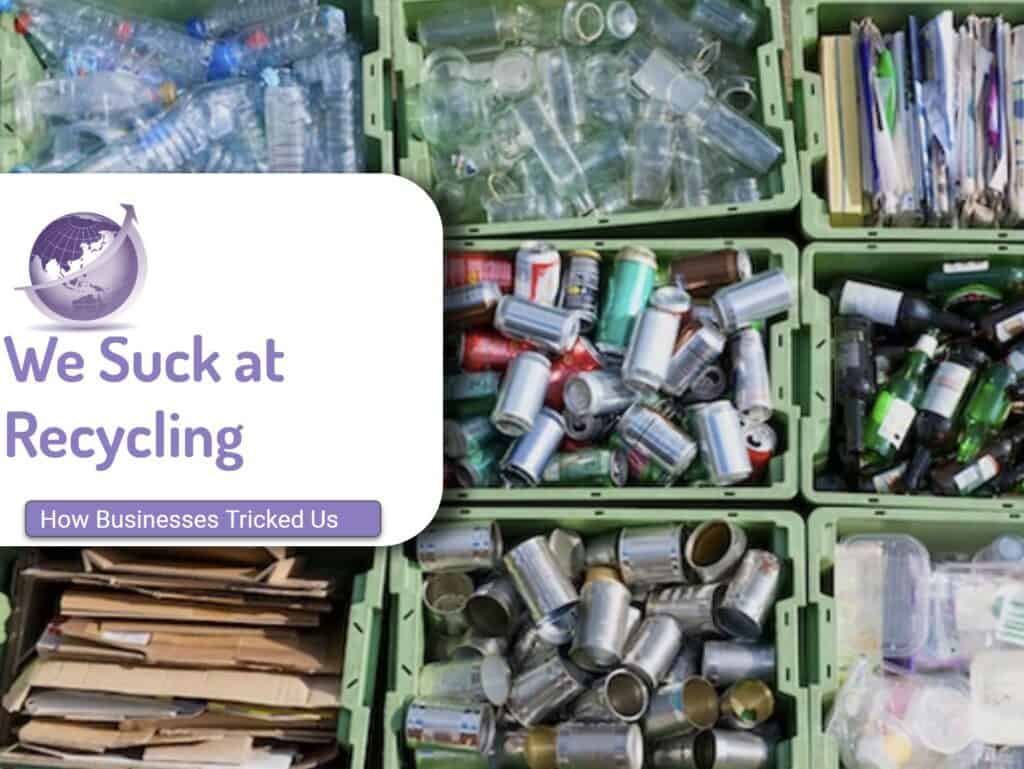As the end of the fossil fuel era approaches, the gas transition to electric in Australia will accelerate to 2030, with a slow and consistent change through the 2030 and 2040 decades. The transition will be rapid and terminal for domestic gas consumption. Australia will need to export all of the gas produced to countries who are slow to transition to renewable energy but will face fierce competition from Qatar and others with a major price crash.
The Labor Government recently released a policy and funding update for gas. [1] The announcement says new gas fields are key to the government’s strategy. Climate groups say this will be ‘devastating’ to emissions reduction targets [2] This climate plan supports temperature rises of 2.5° to 3.0° with 1.5°C passed by 2028. Is this correct? Let’s look at the data, and see how blatantly false this policy is.
How much new electricity is Needed?
The current electricity demand in Australia is about 210TWh in the NEM. (National Energy Market). Changing gas will double the demand. Much of this will be from rooftop solar with batteries for storage.

| Australia Gas | Gas (PJ) | % | Gas Efficiency | Electricity Efficiency | Electricity TWh | Technology |
|---|---|---|---|---|---|---|
| Industry – Heat | 180 | 17% | 80% | 2.5 | 17 | Heat pumps |
| Industry – Other Process | 200 | 19% | 60% | 95% | 34 | Thermal batteries |
| Domestic | 166 | 16% | 80% | 3 | 13 | Heat pumps |
| Electricity Generation | 494 | 48% | 80% | 0.9 | 130 | Batteries, solar |
| Total Australia | 1040 | 194 |
Analysis of Gas Transition to Electric
Let’s look at each of the gas consumption segments
- How much gas is used?
- Gas burnt for electricity generation.
- Gas heating of household water, air and cooking.
- Gas for business heating processes.
- Gas for industrial process
1. How Much Gas is Used
The Sankey diagram of Australia’s gas is in Petajoule (PJ). An approximate conversion of 1TWh is 3.3PJ. We extract 4,900PJ coal seam gas, conventional production, and some petroleum fields and export 70%.

Key things to note are that the gas used to process the gas is over 344PJ which is not much less than we use for electricity and nearly twice as much as households use.
2. Gas Burnt for Electricity Generation
Much of the 494 PJ of gas for electricity is sourced from coal seam gas. How quickly will that exit the system? The share of gas for electricity generation falls about 1.5% a year. It is now down to 7.3%. That makes it 2030 when may be less than 1% of electricity. Batteries are being built rapidly with 5GW/11GWh of utility batteries under construction. We are bombarded with announcements of 4GW/10GWh batteries.
Dr David Osmond’s modelling of a 100% renewable energy system [3] demonstrates that if these batteries run at 1 cycle/day, they could discharge 4 TWh/y and displace 40% of annual NEM gas use. So that is by 2025.
Dr David Osmond’s model shows how much RE is needed..
- Rescaling Wind by 60%,
- Rescale rooftop and utility solar by 45%
- This generation would provide 110% of electricity demand.
- Storage needed would be 24GW/120GWh
- Turn hydro into dispatchable
- Storage & existing hydro Inc Snowy Hydro provide 7% of demand, with a shortfall =other
- The model shows that 8GW for about 800 hours of other generation is needed. This could be halved if solar or wind was increased to 170% and is needed every few years due to reduced renewable energy production.
This means gas would still be in the system but only for a few weeks a year. The rise in household rooftop solar and batteries, or utilising electric vehicle batteries ( vehicle to grid technology) would obviate the need for gas.
Some coal seam gas projects or landfill gas production would continue but it contribute little to demand.
3 Gas Heating of Air and Water.
The 166PJ of gas used in over 5m households will take time to electrify. Heating of air and water with heat pumps is cost effective today, but restricted due to the capital cost of heat pumps, cheap gas and antiquated water systems. The number of heat pumps in Australia has now passed 0.5 m, with over half of those in the past 3 years (or 80,000 per year). [4] To change within a decade will need 500,000 a year to fully electrify hot water. Those 166PJ in 3m houses will take years to convert.
It would be a big job to fit out those 0.5m per year. It will take until 2050 or 25 years away to retrofit those houses with heating, cooking and hot water, and will need electricians and plumbers. At the same time, solar and battery will provide most of the electricity to power the heat pumps.
How Much electricity?
Hot water – Solar PV or heat pump water heater with COP of 4 (assume 3)
Heating: Heat pump with COP of 4.
Cooking cooktop Induction cooktop is about 5-10% more efficient than conventional electric resistance units and about 3 times more efficient than gas.
Oven cooking. Gas and electric ovens tend to use roughly around the same amount of energy per year, while some state about 0.89 kWh of electricity per use, while a gas oven will use 1.5 kWh due to efficiency of bringing up to temperature.
Household Electrification Saves Money

In Appendix A below, we indicate the approximate minimum costs to change a household from gas to all electric. A heat pump is the most cost effective change to households for reduction of energy versus energy conservation.
4. Gas for Business Heating Processes.
A report from Energy Innovation about using decarbonisation low-temperature industrial heat in the USA in 2022, [5] and an update on Thermal Batteries [6], [7] to assist decarbonisation USA has much information. We will use USA numbers as similar for Australian gas usage.
Energy Use by Process
Electricity and gas is used for for heat (drying, cooking, temperatures under 200°C) and gas is used for other processes that are under 1,700°C. Boiler fuel is about 40%. That can be easily converted to heat pumps. Other process heat needs new technology such as thermal batteries or just 1:1 electricity convection heat. Other, and electricity generation can be done by electricity directly or batteries.

Energy Use by Temperature
Another view of business use is temperature. For temperatures under 100°C 11% can be converted to heat pumps. Another 54% of 100°C to 400°C could utilise thermal batteries or “hot rocks in a box”.

5. Industrial Heat
Jacobson in 2024 [8] publication shows industry could use firebricks to enable 100% renewable energy. Firebricks are refractory bricks that can, with one composition, store heat, and with another, insulate the firebricks that store the heat. Because firebricks are made from common materials, the cost per kilowatt-hour-thermal of a firebrick storage system is less than one-tenth the cost per kilowatt-hour-electricity of a battery system. Proponents argue the use excess renewable electricity to produce and store industrial process heat in firebricks can provide a low-cost source of continuous heat for industry. They state using firebricks, that::
- 2050 battery capacity by ∼14.5%
- Annual hydrogen production for grid electricity by ∼31%
- Underground low-temperature heat storage capacity by ∼27.3%
- Onshore wind nameplate capacity by ∼1.2%
- Land needs by ∼0.4%
- Overall annual energy cost by ∼1.8%
Detailed Gas Energy Use

Appendix A Smart Solar Battery Cooking Strategy
Changing a house from gas to electricity is a $16,000 exercise. But savings would be sufficient to pay for a $1800 per year bill in less than 5 years.
| Item | Specification | Cost | Notes |
|---|---|---|---|
| Solar Panels | 13.2kW | $4,390 | Solar Nation, Canadian PV, Growatt 5kW Inverter |
| Battery | 20kWh | $6,000 | Alibaba 10kw$US690, say $US2,800 Growatt LFP |
| Induction Cooktop | 4 burner | $398 | Woolworths, China cost $200 |
| Hot water cycliner | 300l, electric | $1,850 | Reehm 315, installed |
| Electric Oven | 600×500 | $399 | Bunnings Bellini Wall Oven |
| Heat Pump | 7.1/8kW | $2,200 | Fujitsu , Kogan $1,400 |
| Electrician | new circuits | $1,500 | Switchboard, circuits, smart meters |
| Total | $16,737 | ||
| Monthly Payments | $186 | Ten year loan, 6% interest rate from Govt |
References
[1] D. of I. S. and Resources, ‘Future Gas Strategy | Department of Industry Science and Resources’, https://www.industry.gov.au/node/93472. Accessed: May 14, 2024. [Online]. Available: https://www.industry.gov.au/publications/future-gas-strategyhttps://ieefa.org/resources/oil-and-lng-supply-gluts-spell-double-trouble-australian-lng-producers
[2] A. Remeikis, ‘Labor’s gas strategy: what is it and why do critics call it “Back to the Future”?’, The Guardian, May 09, 2024. Accessed: May 14, 2024. [Online]. Available: https://www.theguardian.com/australia-news/article/2024/may/09/labor-albanese-government-gas-strategy-emissions-reduction-policy-net-zero-targets-renewable-energy
[3] ‘A near 100 per cent renewables grid is well within reach, and with little storage | RenewEconomy’. Accessed: May 03, 2024. [Online]. Available: https://reneweconomy.com.au/a-near-100-per-cent-renewables-grid-is-well-within-reach-and-with-little-storage/
[4] ‘Hot water heat pump installations reach half a million as Australians switch off gas’, One Step Off The Grid. Accessed: Jul. 31, 2024. [Online]. Available: https://onestepoffthegrid.com.au/hot-water-heat-pump-installations-reach-half-a-million-as-australians-switch-off-gas/
[5] ‘Decarbonizing Low-Temperature Industrial Heat In The U.S.’, Energy Innovation: Policy and Technology. Accessed: Jun. 28, 2024. [Online]. Available: https://energyinnovation.org/publication/decarbonizing-low-temperature-industrial-heat-in-the-u-s/
[6] ‘Thermal Batteries: Decarbonizing U.S. Industry While Supporting A High-Renewables Grid’, Energy Innovation: Policy and Technology. Accessed: Jun. 28, 2024. [Online]. Available: https://energyinnovation.org/publication/thermal-batteries-decarbonizing-u-s-industry-while-supporting-a-high-renewables-grid-2/
[7] ‘Hot Rocks in Box: The Rise of Thermal Batteries – ep168: Anand Gopal’, Cleaning Up. Leadership in an age of climate change. Accessed: Jun. 27, 2024. [Online]. Available: https://www.cleaningup.live/hot-rocks-in-box-the-rise-of-thermal-batteries-ep168-anand-gopal/
[8] ‘Effects of firebricks for industrial process heat on the cost of matching all-sector energy demand with 100% wind–water–solar supply in 149 countries | PNAS Nexus | Oxford Academic’. Accessed: Jul. 29, 2024. [Online]. Available: https://academic.oup.com/pnasnexus/article/3/7/pgae274/7710221?login=false









